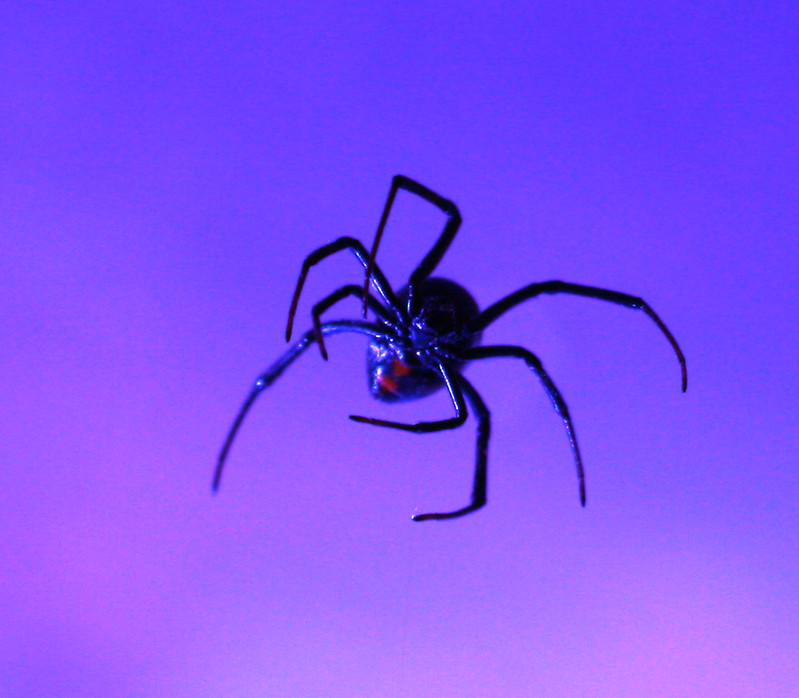Insect Myths: True or False
March 20, 2021 at 5:00 am Stephanie Wolek Leave a comment
Insects have been the source of myths and wives’ tales for as long as humans have had to deal with them. They’re small and hard to observe so it’s no wonder we’ve come up with tons of crazy ideas. To make matters worse, they often act differently in captivity than in the wild, resulting in even more myths. Here, we’re going to delve into a handful of the most common ones.
Earwigs crawl up ears
There’s a myth that earwigs crawl up ears…hence the name. Some versions of the myth even suggest that they crawl up there to lay eggs! In reality, earwigs do not seek out human ears. They might crawl up an ear by accident but certainly not on purpose.

Black widow spiders are incredibly dangerous
OK, so spiders are arachnids, but they fit well in this list. First, let’s get one thing straight. The “widow” spiders are a genus, not a species, and so “black widow” can mean a different species of spider depending on where you live. They are venomous but only the bites of the female are dangerous. Even then, it’s extremely rare that they cause major complications (so it’s even rarer that a bite is lethal), especially if medical care is involved. While we’re at it, black widows do not chase people or go out of their way to bite—it’s always done in self-defense. If you see a black widow, respect its space and leave it alone. Don’t try to kill it—again, most are harmless, and messing with the spider puts you at greater risk of being bitten.
Scorpion stings are lethal
Scorpions get kind of a bad reputation. Most are venomous, yes, but their venom is designed to kill small insects and animals—not large humans. The majority of scorpion stings are harmless (albeit painful). In the United States, the only scorpion that poses any kind of risk is the Arizona bark scorpion—found in the deserts of southern California, Arizona, and New Mexico. The Arizona bark scorpion’s venom is potent and causes severe pain and nausea. That being said, few cases require medical attention and deaths are extremely, extremely rare (think less than one a year if not fewer). Scorpions also don’t seek out people to sting—they generally prefer to hide and want to be left alone.
Female praying mantises always eat their mates
This myth started because of captive observation of praying mantids. In captivity, the female often eats the male after copulation. This is rare in the wild, though, only happening less than a quarter of the time. It depends on the health and hunger of the female. One study found that well-fed females never eat their mates while starving females often do. It makes evolutionary sense for starving females to eat the males—they need food to produce his offspring. The moral of the story? They don’t always eat their mates, it’s a bit more complicated.
Ultrasonic devices repel insects
Ultrasonic devices sound like a miracle—they emit a sound that repels insects (and supposedly mice and other pests) that is inaudible to humans. There have been several studies on these devices, mostly with cockroaches, and they all came to the same conclusion—the devices don’t repel pests. They just don’t work! Save your money and ignore ridiculous claims of devices that you can simply plug in to repel pests.
Humans swallow spiders at night
While I’m sure this has happened to someone somewhere…there’s literally no evidence that this is a regular occurrence. This myth started as a story intended to freak people out and that’s it. Period.
Bees die after stinging
This myth is really common—supposedly all bees die after they sting. While this is true for worker honeybees, that’s it. No other species dies after stinging. If they did, they wouldn’t last very long! The reason why stinging kills worker honeybees is that the stinger is connected to their digestive tract and muscles. When the stinger is released, part of their digestive tract is left behind and there’s an abdominal rupture. This doesn’t happen to other bee species so while this myth has an ounce of truth to it, that’s as far as it goes.
So, there you have it! Some of the most common insect myths, de-mythized. Hopefully some of them help you sleep a little easier at night.
Broken Secrets – Subscribe: Email | Facebook | Twitter
Sources: Griffin Pest, Health Line, Archive.org, Snopes, buglord.com, Scientific American, EarthSky
Entry filed under: Animals, Demystified. Tags: insect, myth, praying mantis, scorpion, spider.





Trackback this post | Subscribe to the comments via RSS Feed